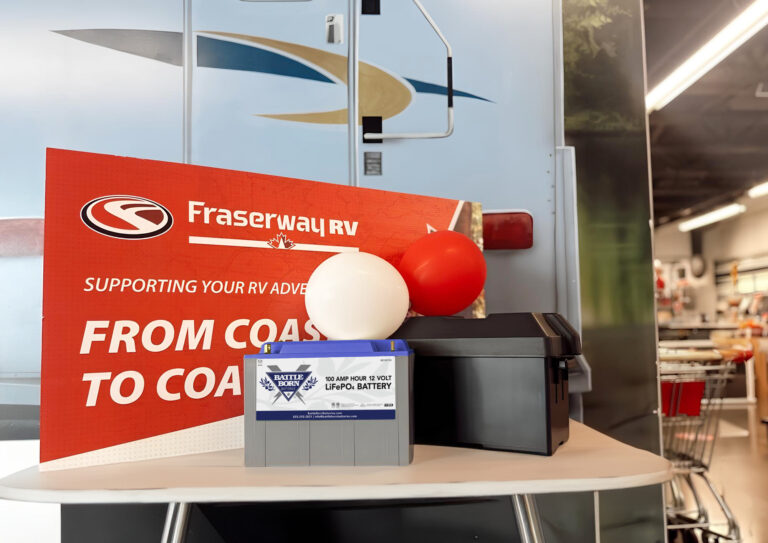Improved battery technology has driven some of the most meaningful developments in society over the past decade. Specifically, the introduction of lithium-ion batteries has been a transformative factor. This is thanks to its ability to store greater volumes of energy in ever smaller devices. It’s an advancement that’s impacted everything from mobile phone technology to the growing viability of clean energy sources like wind and solar. That said, these batteries have also attracted their fair share of negative publicity—primarily because of the environmental consequences of lithium mining.
Lithium mining simultaneously provides a critical component of revolutionary green energy resources and causes significant environmental degradation. Foundational improvements in battery technology depend on a growing supply of lithium. So, how does one resolve this inherent contradiction without disrupting the ongoing evolution of the clean energy sector? The answer is to develop a more responsible lithium mining process.
Luckily, the growing spotlight on lithium mining has prompted companies to adopt increasingly conscientious practices for lithium extraction. As a result, these improvements in the mining process are mitigating many of its negative impacts.
Operational innovations have the potential to subvert the present—and generally negative—perception of lithium mining. Even so, the industry as a whole still has a way to go. Here, we’ll explore the future trajectory of lithium-powered technology.
The Increasing Demand for Lithium Mining
The demand for lithium is skyrocketing because of its wide applicability across a variety of industries. Lithium batteries now power most electronics, and by 2030, 95% of lithium demand is projected to be for batteries.
Smartphones, tablets, and laptops use lithium batteries to increase both the longevity of the charge and the number of charge cycles. And all of these benefit from a much smaller package that helps manufacturers slim down electronics.
But the application of lithium-ion batteries isn’t limited to consumer electronics. Battery technology can also fulfill important functions. For example, facilitating the energy storage infrastructure necessary to make renewable power viable at scale.

Natural energy sources like wind or solar are intermittent. This means that they only produce power when the sun is shining, or the wind is blowing. But to use these renewables reliably and consistently, you need robust power storage infrastructure that’s tied to the energy source.
The green energy transformation is currently making waves around the world. The fact that many industries use lithium-ion batteries for grid-level energy storage is spurring the growing demand for this metal. Moreover, these batteries’ ability to store excess energy ensures a consistent supply of power across the grid.
The ongoing effort to improve battery technology has seen the performance of lithium-based energy storage devices improve. As a result, these batteries have become increasingly appealing to new industries and diverse business sectors.
As the performance of lithium batteries improves, new uses become possible, and demand correspondingly increases. In this way, lithium is driving innovation in multiple directions, some of which are profoundly important to socio-economic development. One such groundbreaking innovation is the introduction and growing popularity of electric vehicles (EVs).
The Important Role of Lithium Mining in Electric Vehicle Production
The surge in demand for lithium is driven—in large part—by its usage in the EV market. With their high charge capacity and lightweight structure, lithium batteries enable EVs to increase the mileage between charges.
The growing popularity of chargeable cars isn’t just because of their environmental benefits. Even so, EVs do have the potential to take fossil fuel-burning cars off the road—and vastly reduce the average person’s carbon footprint. Because of their potential to reduce environmental harm, many governments are incentivizing the widespread adoption of EVs. At the same time, the reduced maintenance needs and operating costs of these vehicles have caught the attention of many consumers.
Taken together, these factors have prompted manufacturers to increase production. As each of these vehicles requires an advanced battery, this has, in turn, exponentially expanded demand for lithium mining. Of course, it’s not just typical passenger cars that are rapidly eliminating fossil-fuel-based power sources.
As industries shift toward electrification, electric forklifts, trucks, and mining equipment will become more common. These professional applications allow companies to cut operating costs with reduced vehicle maintenance. Plus, they’re significantly reducing the carbon footprint of operations across industries, assisting organizations to minimize their environmental impact.
Currently, lithium-ion batteries are at the cutting edge of energy storage technology, making this mineral ore essential for the transition to EVs. Therefore, the adoption of some of the most crucial green technologies available today is firmly tied to lithium mining.
Lithium as a "Clean" Source of Energy?
Out of all the industries ramping up demand for lithium-ion batteries, perhaps the most important is the renewables sector. In part, it’s because of their high energy capacity, which can solve the intermittency issues of wind and solar power. However, the potential applications of lithium energy storage in renewables extend far beyond this specific scenario.
First and foremost, the greatest hindrance to the widespread adoption of renewables is a lack of infrastructure. The required networks to generate—and expediently deliver—enough energy simply aren’t yet there. Therefore, people should focus on efficiently utilizing the finite amount of power currently produced through clean energy sources. This is where lithium mining can help facilitate a reduction in energy waste by producing battery technology with minimal power loss during charge and discharge cycles.
Lithium-ion batteries also help stabilize the grid by supplementing power to meet fluctuations in demand. This function takes resolving intermittency one step further. That is, it doesn’t just respond to alterations in the generation of renewable energy. It also enables the optimization of the grid.
On top of these benefits, the increased energy density and longer lifespan of the average lithium-ion battery reduces the raw materials necessary to store the same amount of energy. Over time, this cuts down on the lifetime environmental impacts of battery production.
Finally, the widespread availability of advanced lithium-ion batteries allows individuals to develop their own distributed renewable energy systems. Essentially, a home or business owner can set up their own solar power system on-site. The end result is reduced transmission and distribution losses—along with the improved overall efficiency of the energy grid.

Environmental Considerations in Lithium Extraction
Resource extraction and environmental degradation tend to go hand in hand. That said, widespread lithium mining is a relatively new phenomenon. That, coupled with the exponentially growing demand for the ore, has seen some notable solutions.
The brine extraction method, which involves pumping large quantities of water through a series of pools, is particularly effective. However, this method also relies on extensive water usage, something which can drain local aquifers. As a result, local communities and ecosystems may be deprived of these essential resources.
Runoff from lithium mining can also be dangerous to local ecosystems. Some processes use harmful chemicals, which can find their way into local streams and other bodies of water. This creates a potentially hazardous environment for local aquatic wildlife.
Finally, the lithium mining process as a whole is incredibly energy-intensive. Unsurprisingly, the heavy power consumption required to extract lithium has generated a lot of criticism. To what extent can the high carbon footprint of lithium mining operations be mitigated by its contribution to green energy resources? Although these impacts can be detrimental to local communities—and the natural environment as a whole—growing concern surrounding the negative consequences of mining operations is making a tangible difference.
For example, some ethical mining operations are stepping up and developing measures to make extraction operations more sustainable. Recently, the success of these responsible mining practices has paved the way for moderating the environmental consequences of growing lithium demand.
The Development of Responsible Mining Practices
Lithium mines are continually adopting sustainable practices that mitigate the environmental harm brought about by the extraction process. Broadly, the blueprint for sustainable lithium mining includes water recycling and treatment to reduce overall consumption. Oftentimes, companies couple this practice with the use of environmentally friendly chemicals in the extraction process. Both measures aim to simultaneously eliminate ecosystem pollution and reduce consumption of critical water resources.
The rampant energy needs of the lithium mining process can also be addressed by shifting away from fossil-fuel-based power sources. Furthermore, the ubiquity of renewable resources has also made it possible for ethical mining operations to utilize renewable energy. This effectively slashes the carbon footprint of lithium extraction, thereby greatly improving the eco-friendly nature of the resulting battery technology.
These improvements have already made a notable difference in the sustainability of lithium mining. In addition, the industry is taking other progressive steps to improve the remaining inefficiencies in the mining process. Research and development in the sector continue to target less impactful methods of lithium extraction. The hope is that these will result in further breakthroughs moving forward.
Lastly, one of the most impactful steps that responsible lithium mines can take is to prioritize local community outreach. To this end, companies are actively working to ensure that they share the benefits of lithium mining with local communities.

Future Technological Advancements in Lithium Mining
Lithium mining companies are refocusing and expanding their operations to satisfy the increasing demands of the modern age. Much of this centers on rectifying the negative environmental impacts of lithium mining, all the while working toward a more eco-conscious future.
Changes like the introduction of closed-loop systems are already improving the waste management practices of many mines. By reusing and recycling water and chemicals, these systems vastly reduce the resources consumed during daily operations. In addition, the careful management of chemicals in a closed-loop system can prevent them from escaping into the surrounding environment.
Another promising development that’s currently on the horizon is the concept of geothermal brine extraction. This method leverages the brine produced as a byproduct of geothermal power plants for its dissolved lithium. Granted, this idea is still under research. Nonetheless, it demonstrates the innovative nature of the ongoing quest for more sustainable lithium mining practices.
Another key area of development is direct lithium extraction (DLE) technologies. These aim to remove lithium directly from the brine, thereby eliminating the need for a network of evaporation ponds. If successful, this research would not only result in a more efficient extraction process but also significantly cut down on water usage.
Additionally, one of the most practical advancements being made is in the recycling of lithium-ion batteries. A greater emphasis on recycling in the manufacturing process can help to minimize demand by making the most of existing resources.

The Future of Lithium-Ion Batteries
Lithium-ion batteries are here to stay. In fact, the demand for this energy resource continues to grow alongside the growing needs of today’s digital society.
The technology has become near indispensable. However, this same technology that most people use daily also relies on lithium mining. The bottom line is that the further development of renewable energy infrastructure and the switch to cleaner transportation options depends on lithium extraction.
However, as much as the environmental impacts of lithium mining are cause for concern, the solution isn’t to do away with the practice. Rather, companies in the renewables sector are urged to prioritize responsible mining practices. This will go a long way toward mitigating the damage of lithium mining to the environment.
Leading battery manufacturers in the lithium industry are already taking steps to secure a more eco-friendly future. At the same time, companies like Dragonfly Energy are developing more energy-efficient lithium-ion batteries with longer lifespans to reduce the need for replacements. They also work with US based responsible mining and battery recycling operations that are at the forefront of developing sustainable practices for their domestic battery cell manufacturing operations.
Reach out today to learn more about Dragonfly Energy’s role in the clean power transition.



